Betty Crocker Hand Blender BC-1303CK In-depth Review

Overall Verdict
The Betty Crocker’s performance is adequate for simple tasks such as puréeing soups, making nut milk, and concocting mayonnaise. Yet, its proficiency is tested and found wanting with the challenge of frozen fruit smoothies; the power of the motor is insufficient for achieving the desired creamy texture. Moreover, when it's a question of whipping efficiency, the blender is outpaced by competitors that boast whisk attachments.
The blender’s build also leaves room for improvement. Its plastic components point to a design that prioritizes cost-saving over durability. And this was quickly proven to be a drawback, as evidenced by a broken part that emerged after our testing.
Things We Like
- Adequate for light task
- Simple design
Things We Don’t Like
- Flimsy construction
- Lackluster heavy blending performance
- Lack of user-friendly features
Affordable immersion blenders often prompt skepticism, and the Betty Crocker BC-1303CK is no exception. In this review, we'll examine if this blender is a hidden gem or a case of false economy. We'll test its 200-watt motor, two-speed settings, and plastic construction to offer you a clear picture of what you can expect. If you're considering this blender, our findings will help you weigh its cost against its actual kitchen performance.
5.1 Performance
The Betty Crocker blender serves pretty well for regular, uncomplicated pureeing tasks, offering just the right amount of power for daily kitchen activities. Its limitations become evident, though, in scenarios requiring higher power. In comparison to other highered-powered blenders, especially those with additional attachments like whisks, it also tends to lag in versatility and effectiveness.
7.0 Hot Soup Purée



In a 30-second benchmark test for pureeing, the Betty Crocker immersion blender was used to process a soup consisting of pumpkin, carrot, and celery. The blender yielded a puree that was fairly smooth and on par with similar budget-friendly blenders. The puree came out visually homogeneous; however, upon straining, small, unprocessed pieces of the vegetables were still discernible.
For the most part, we consider this result acceptable. It’s particularly sufficient for those who prefer a homestyle texture in their purees, such as in comforting soups or stews, or for preparing baby food where fineness is balanced with the need to minimize choking risks, rather than achieving a velvety restaurant-grade texture.
2.0 Frozen Fruit Smoothie
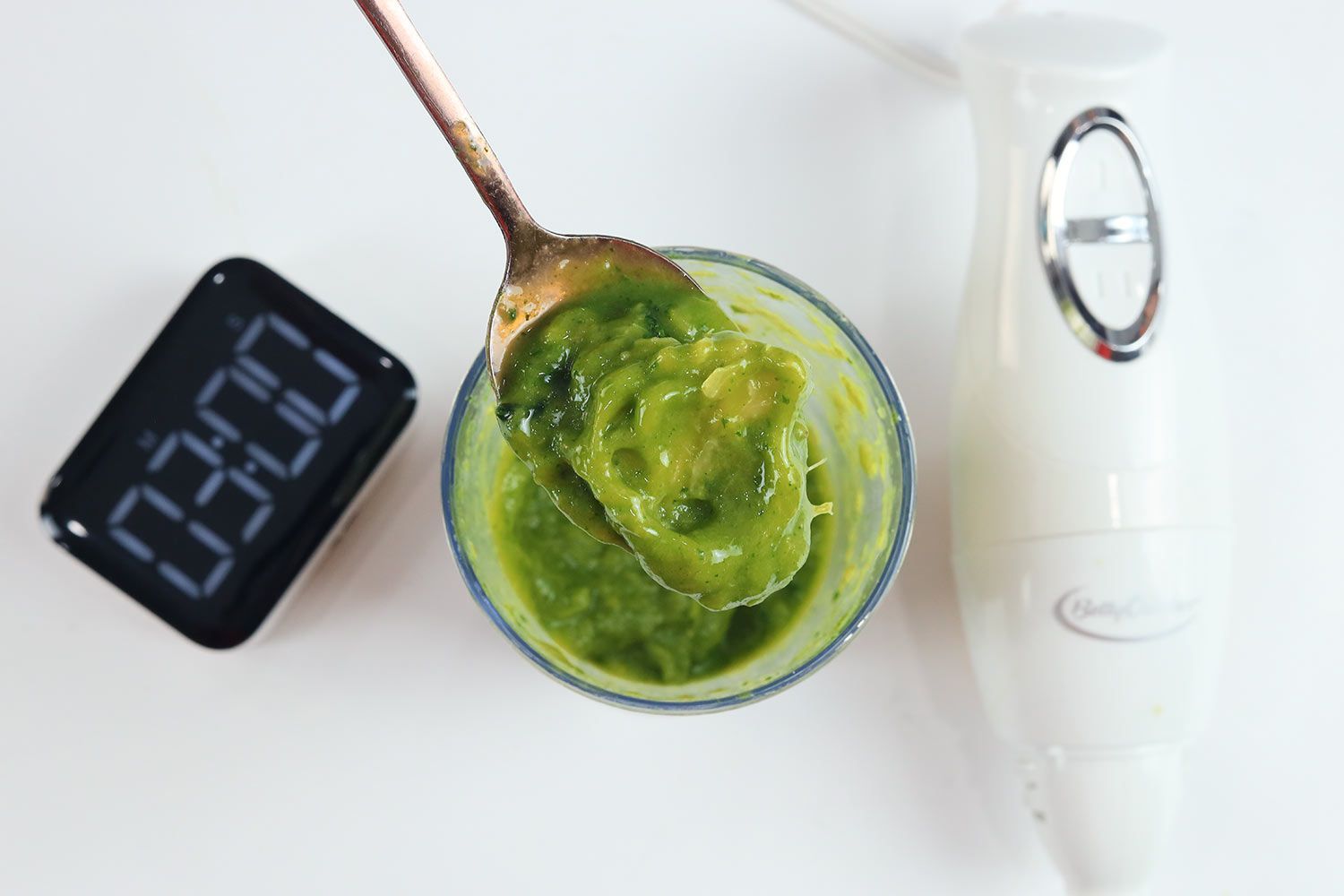


The test was conducted using kale, mango, and pineapple, all frozen, to challenge the Betty Crocker blender's capabilities. As the blender operated, the focus was on the transformation of the mixture's texture. The goal was to achieve a smoothie that was both smooth in texture and cold in temperature—hallmarks of a well-crafted frozen smoothie. However, after three minutes of blending, it became apparent that the smoothie had not reached a satisfactory level of smoothness. Pieces of fruit and kale remained noticeable, despite the blender’s considerable effort.
From this test, we conclude that the Betty Crocker blender is definitely not the ideal tool for creating smoothies from tough, frozen ingredients within a short time frame without compromising texture. For those seeking a consistently smooth and chilled smoothie, a higher-powered blender, such as the Vitamix 5-speed or the Braun MultiQuick-5, would likely be a better investment.
6.5 Mayonnaise
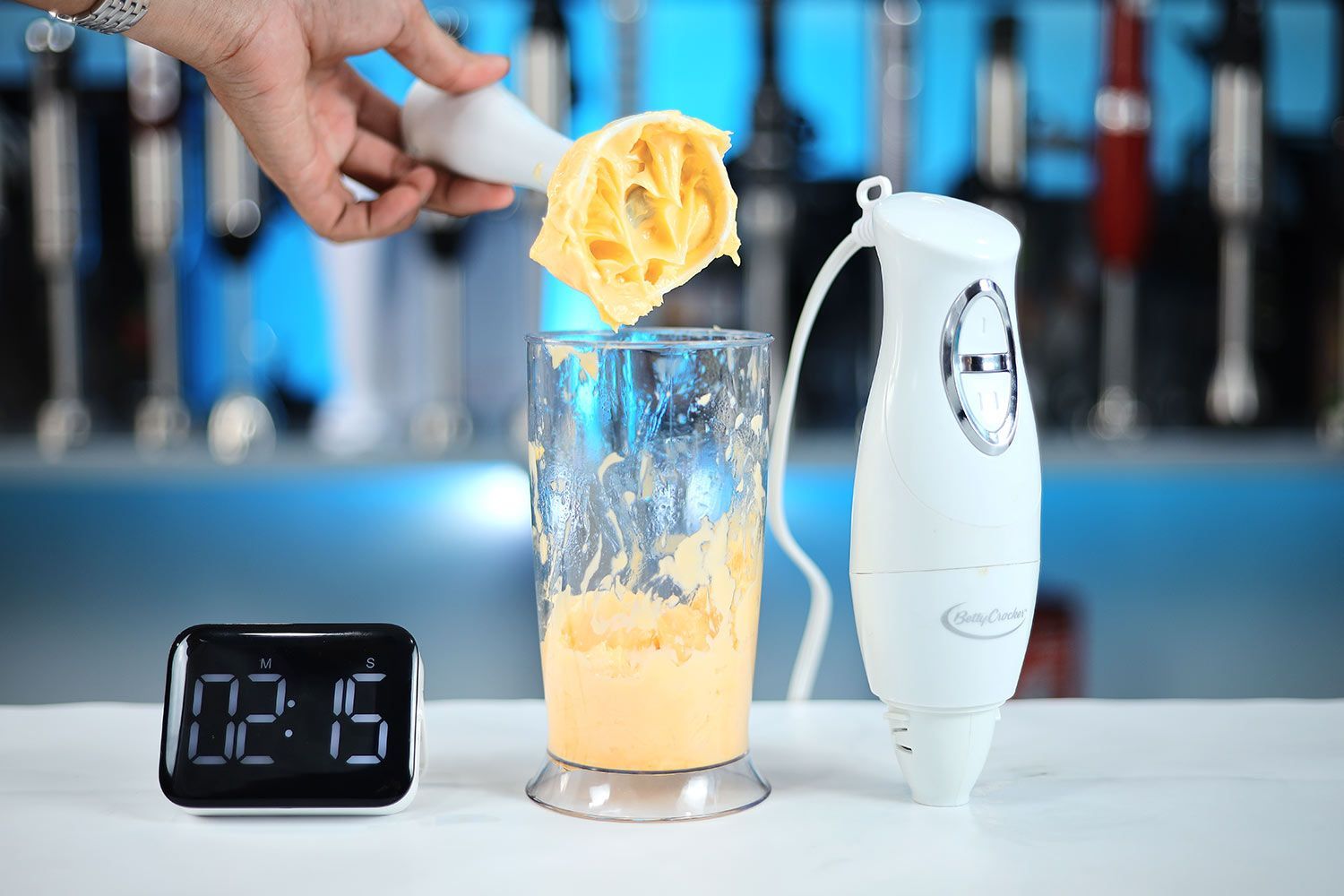

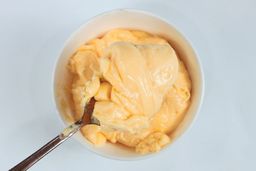
After a blending time of 2 minutes and 15 seconds, the Betty Crocker produced mayonnaise that was both smooth to the touch and pleasing to the palate — a well-emulsified mixture that held together in creamy harmony.
However, when placed in the context of performance speed, the Betty Crocker takes its time, with a blending duration that stretches notably beyond the average of its high-speed competitors. In a fast-paced culinary environment, this longer duration could be seen as a drawback so despite the successful outcome, the blender did not score highly in this test.
7.0 Almond Milk

Our Betty Crocker completed this test in 1 minute and 30 seconds. This performance was on par with the average of other blenders in the same category.
The almonds were ground to a fine consistency, as evidenced in our post-straining analysis. This fine grind infused the milk with a rich flavor, creamy texture, and the inherent nutrients of the almonds. Notably, the blending process had an additional effect: the blending shaft introduced a significant amount of air into the milk. This resulted in a progressively frothy top layer that became more pronounced as the blending continued, eventually leading to a spillover from the beaker.
For users intending to use the Betty Crocker blender for similar liquid-based tasks, it is advisable to opt for a larger container. This would help prevent the frothy mixture from spilling over and creating a mess on the countertop.
Failed Whipped Egg-Whites

In the test to assess Betty Crocker's ability to whip egg whites, the lack of a whisk attachment became a significant limitation. Utilizing the standard blending shaft, the blender struggled to introduce enough air into the egg whites. This resulted in a subpar outcome: the egg whites separated into a frothy top layer and a watery bottom layer, instead of forming a uniform, fluffy foam.
5.5 Design
The Betty Crocker features a straightforward, no-frills design. Given its lower price point, it's understood that it won't match the durability or advanced features of more expensive models. Yet, we would rightfully expect a certain level of reliable and steady performance. However, this is where the Betty Crocker blender disappoints; our blending shaft was damaged after only a few uses.
In the Box
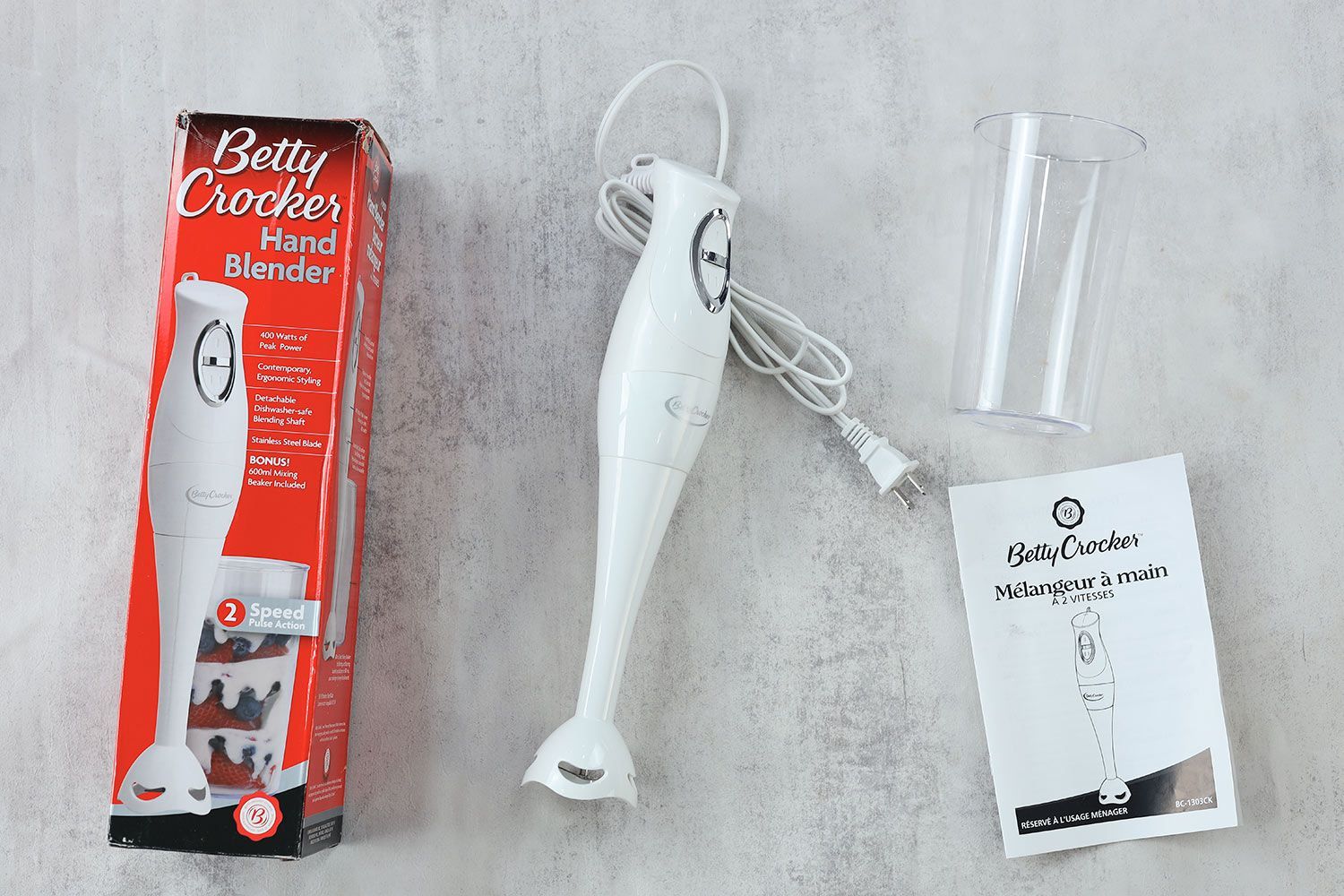
- Motor body
- Blending shaft
- Beaker
- User manual
Dimensions
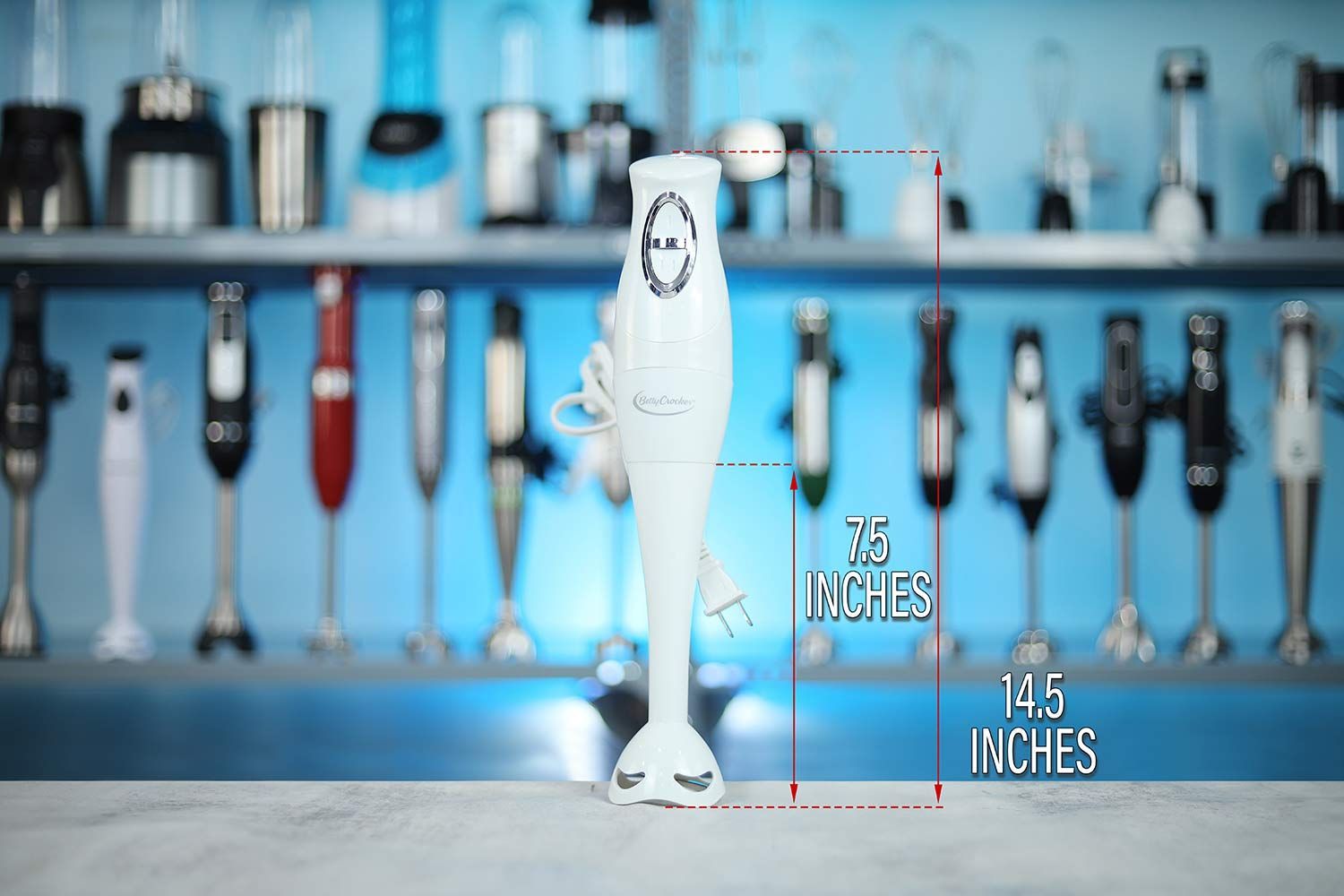
The Betty Crocker features a height of 14.5 inches and a width of 2.9 inches, making it a compact and space-efficient appliance suitable for easy storage. It weighs a manageable 1.4 lbs, ensuring comfortable handling and use. The blender's shaft length is 7.5 inches, ideal for blending in deep pots.
5.5 Build Quality
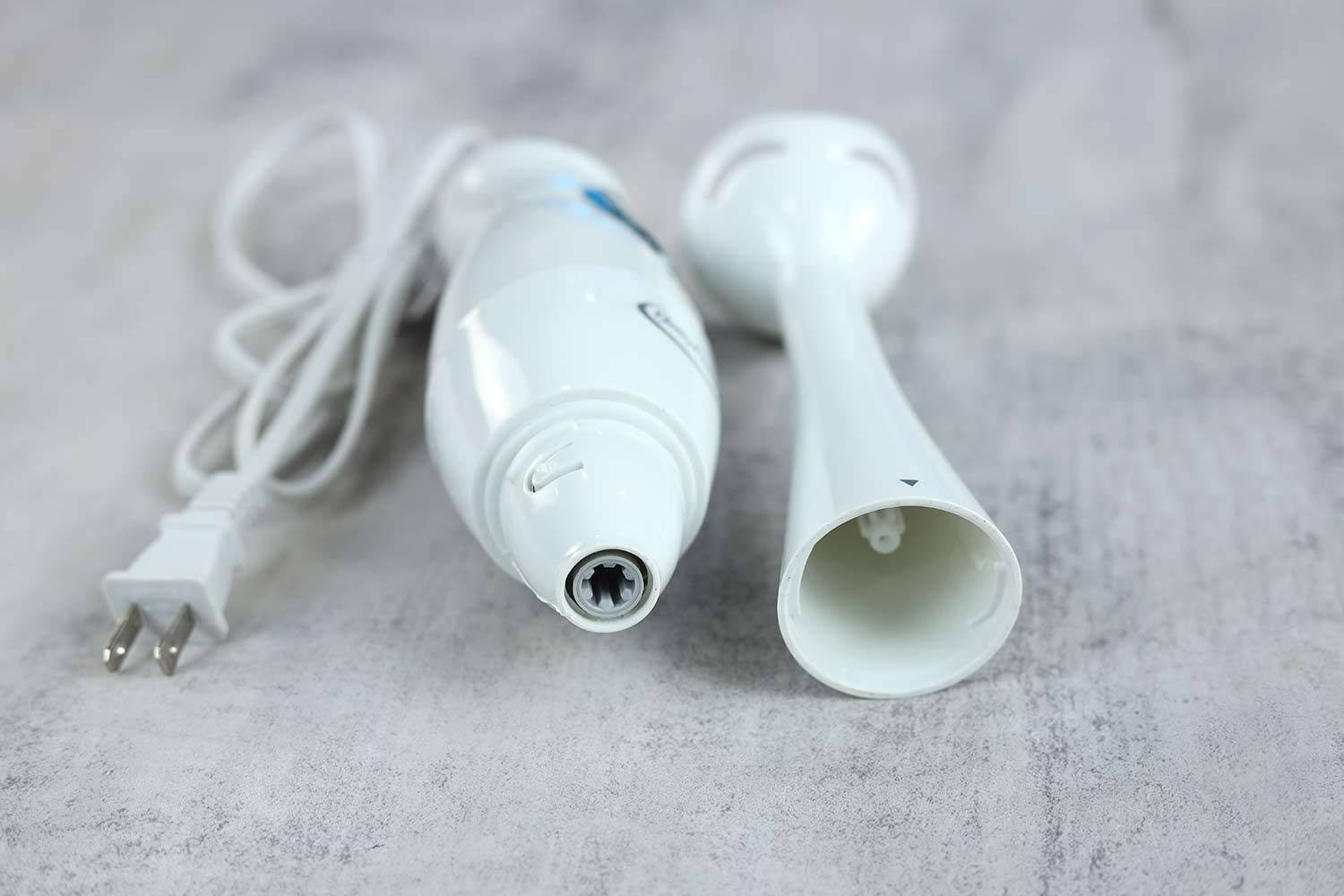
For even a low-cost kitchen appliance, consumers might not only expect but require a certain standard of durability and reliability that, based on some accounts, this blender does not consistently meet. Among the blenders we've tested, Betty Crocker is considered one of the poorest in terms of build quality. Its overall construction, both internally and externally, is deemed cheap. Moreover, its aesthetic appeal diminishes quickly; the color and finish lose their vibrancy and sheen after only a few uses.
Speed and Controls

The blender is designed with a dual-speed functionality, accessible via two buttons located on its front. When toggling between these speeds, we notice a significant and clear alteration in the rotational velocity of the blades.
4.0 Blending Shaft
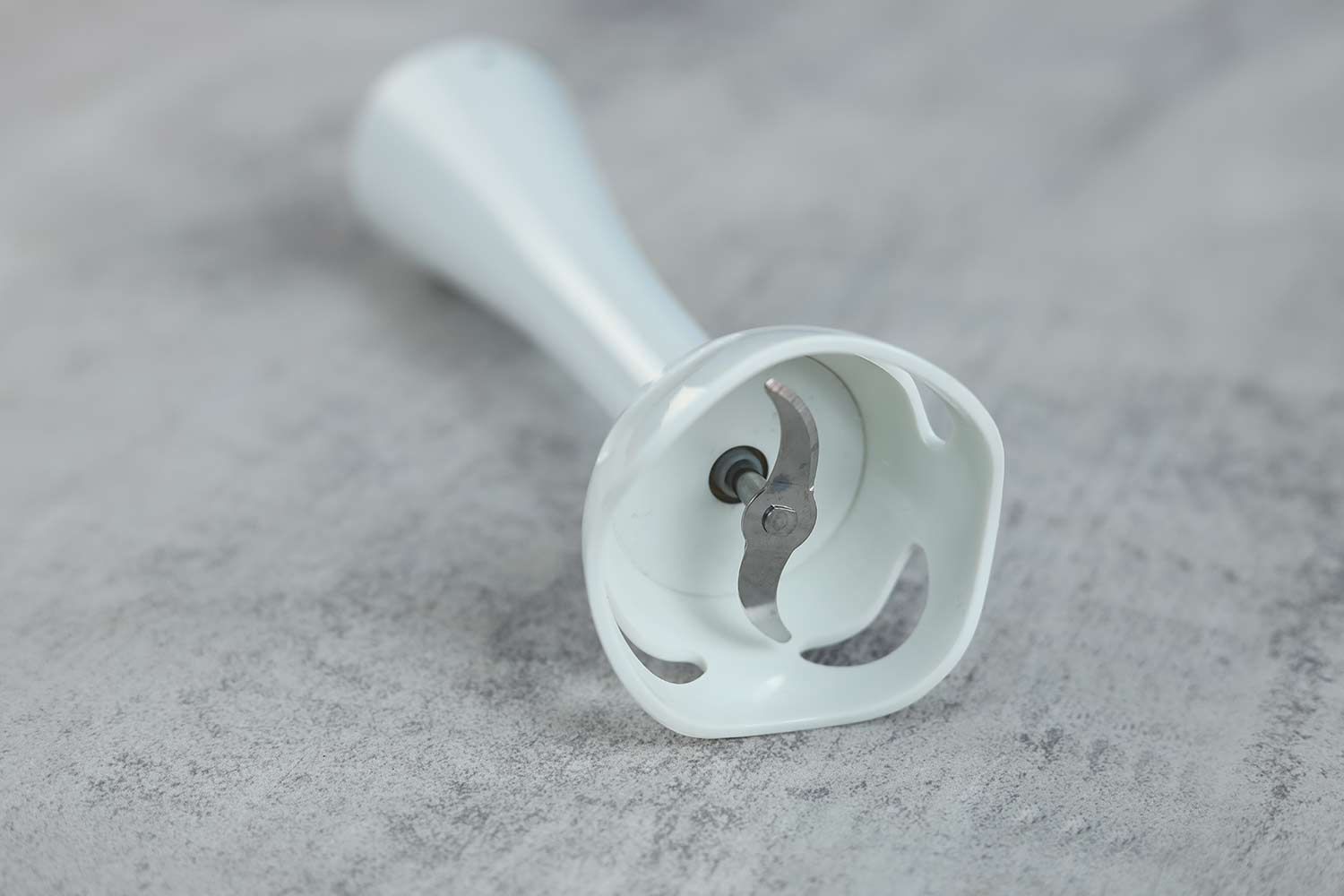
Our testing of the Betty Crocker blender revealed two main issues: the blending shaft is prone to breaking under heavy use, and the two-prong blade tends to rust prematurely.
10 Beaker
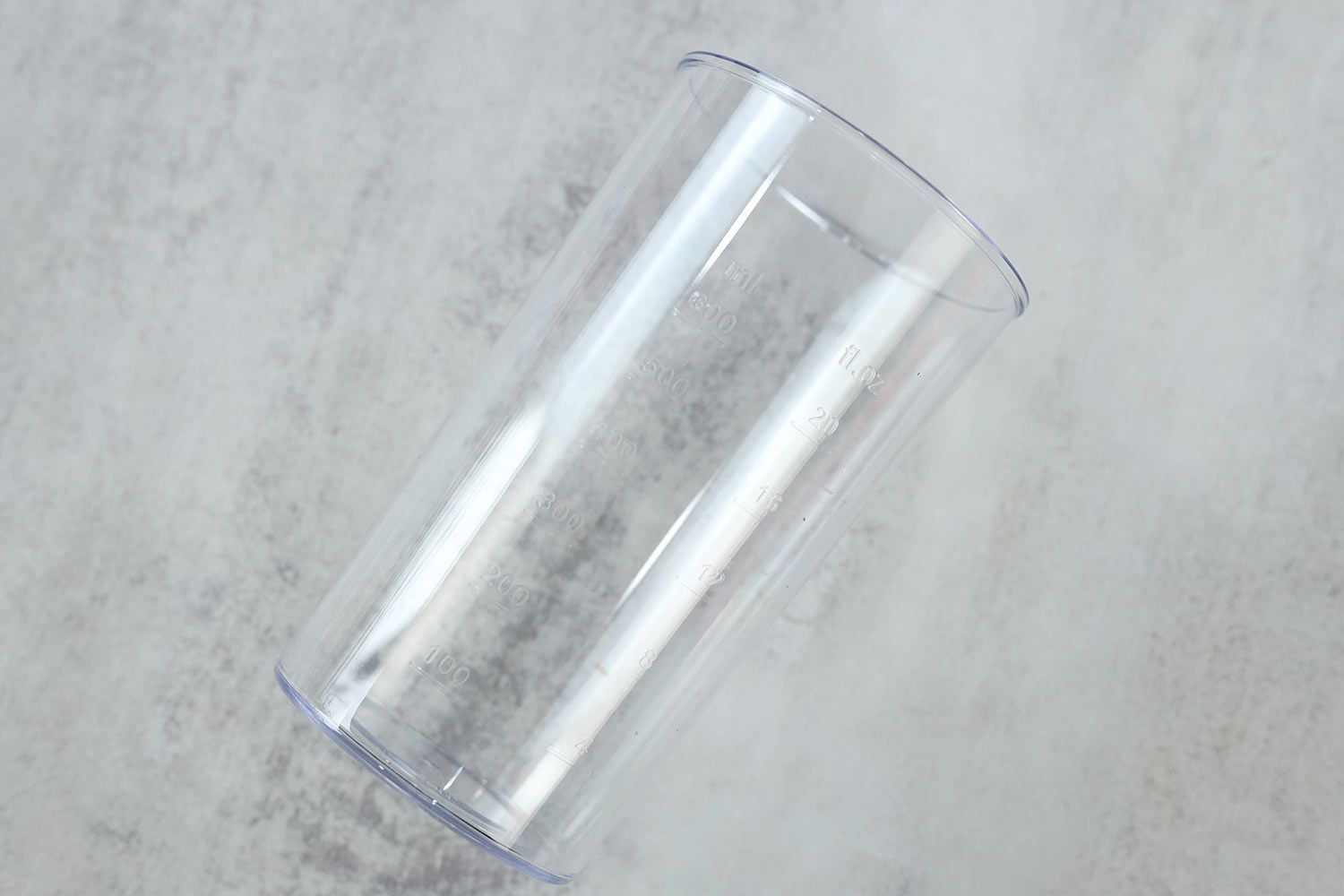
For those using the Betty Crocker blender's 20-ounce beaker for moderate blending activities, it serves well initially. Yet, it's important to be aware that the beaker can show signs of wear or marking from the blender's action.
10 Power Cord
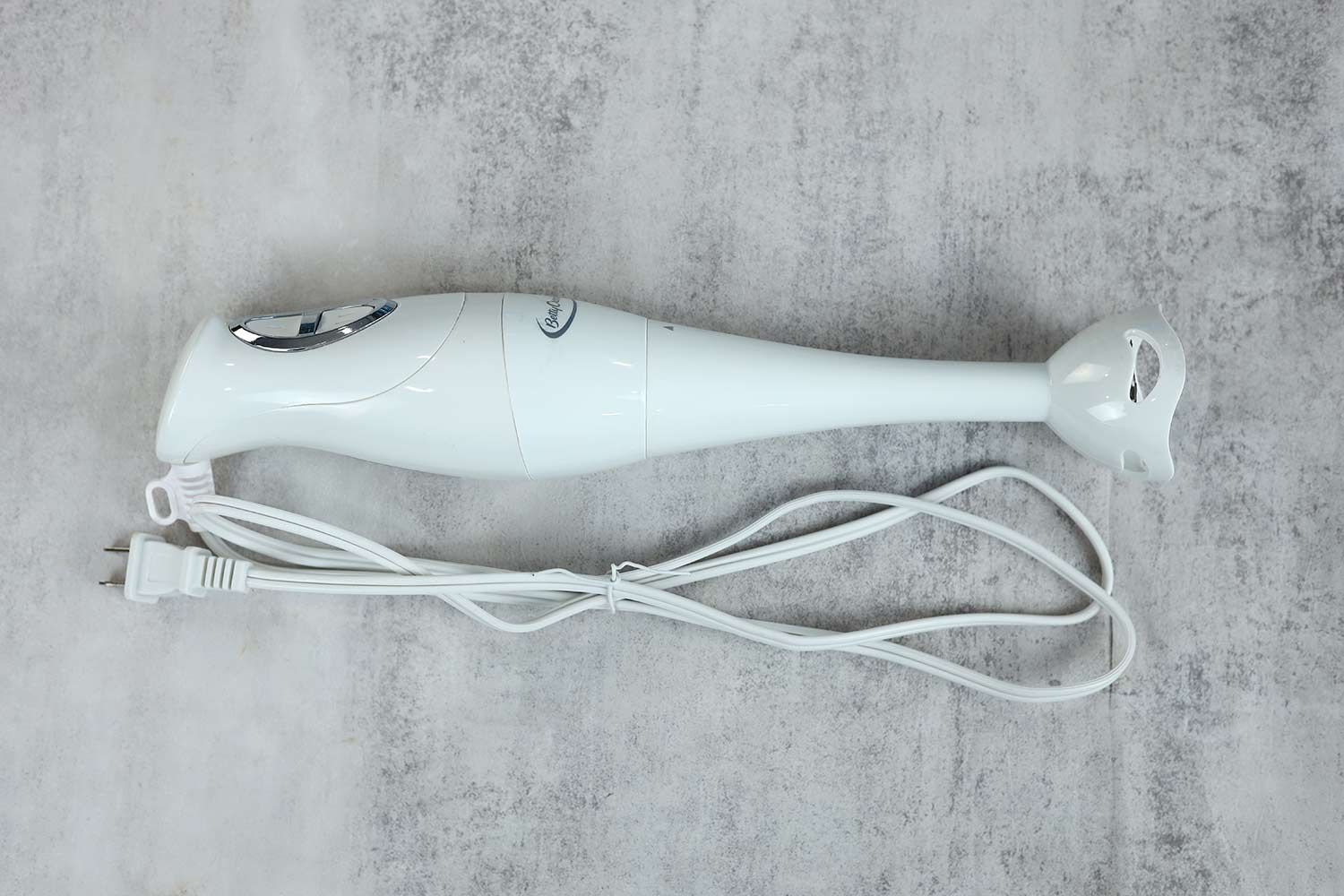
The Betty Crocker features a power cord of reasonable length, providing good mobility in the kitchen without being restricted to close proximity to an outlet.
Extra Accessories: Not Included
The Betty Crocker’s usability is hampered by its inefficient vortex creation and uncomfortable vibrations. The overall design also contributes to its limitations, as its ergonomics and weight distribution are not as conducive to comfortable handle as those of other blenders in the market.
5.9 Usability
The Betty Crocker’s usability is hampered by its inefficient vortex creation and uncomfortable vibrations. The overall design also contributes to its limitations, as its ergonomics and weight distribution are not as conducive to comfortable handle as those of other blenders in the market.
4.9 Ease of Use
We grasped the functionality of the blender without much difficulty. However, the stiffness of its buttons, which required a firm press for activation, was uncomfortable and felt a bit cumbersome. The design of the blade housing effectively reduced suction against the beaker, enhancing the blender's manageability. Yet, we still encountered persistent spattering challenges every time we moved the blending shaft. This spattering issue seems to be linked to the blender's inefficient vortex creation; a poorly formed vortex can cause ingredients to be flung outwards, resulting in messy splashes. Additionally, the blender's poor ingredient intake frequently forced us to stop and manually adjust the contents, making the process both tedious and time-consuming.
9.0 Blade Assembly
Assembling our blender was an effortless task. We easily aligned the blending wand with the motor body until it securely clicked in. Disassembling was just as simple and hassle-free: a quick counterclockwise rotation and then pulling it away from the body did the trick.
6.5 Handling

The handle’s rigid form and lack of a cushioned grip contributed to rapid hand fatigue. The motor creates pronounced vibrations, especially when tackling dense, challenging ingredients. This, coupled with the unwelcoming stiffness of the controlling buttons, sharply highlights the ergonomic flaws of this Betty Crocker, making for a less than ideal blending experience.
7.5 Cleanability
While the front surfaces of the blades were easily cleaned with a simple rinse under running water, the backside presented a challenge. Food particles tended to stick there, and the narrow gap between the blade and its guard made it impossible to reach these particles with fingers. We found that employing a straw-cleaning brush was necessary to effectively remove these persistent leftovers.